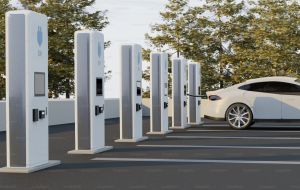Chinese automotive brands secured an unprecedented 11% share of the European battery electric vehicle (BEV) market in June, marking a significant milestone. This surge in registrations occurred as manufacturers rushed to beat the European Union’s newly imposed tariffs on electric vehicles, which came into effect earlier this month.
Leading the charge was SAIC Motor, which made substantial shipments of its MG4 hatchback to European dealerships. Vehicles registered before July 5th were exempt from the new tariffs, allowing them to be sold without the additional duties on imported EVs. In total, Chinese brands registered over 23,000 BEVs across Europe in June—a record pretty high.
This 72% month-on-month increase in registrations outpaced the overall growth in European EV registrations, which saw a more modest rise. It's worth noting that Chinese-manufactured vehicles from Western companies like Volvo, BMW, and Tesla are also subject to these new duties.
The sustainability of these volume gains remains uncertain as the impact of the EU tariffs takes hold in the coming months. Under the new regulations, SAIC faces an additional 38% tariff, while BYD will incur an extra 17% on top of the existing 10% customs duty.
Both European and Chinese automakers are scrambling to establish local EV manufacturing in Europe to bypass these tariffs, with concerns growing that the situation could escalate into a trade conflict between Beijing and Brussels.
While SAIC led the influx of Chinese-branded imports, about 40% of the MG4s registered in June were self-registrations by dealers, a trend that Dataforce's Head of Product Gabriel Juhas described as "not a very healthy growth." SAIC has been offering attractive leasing deals, including a two-for-one promotion for the MG4 in Germany, where EV sales have struggled.
In contrast, BYD, the world’s largest EV manufacturer, showed signs of progress. A marketing campaign centered around the Euro Cup Championships in Germany resonated well with consumers, according to Julian Litzinger, a Dataforce analyst.
Another key factor driving the European EV market in June was the introduction of new incentives in Italy, which helped to double the country’s battery-electric sales compared to the previous year. The Italian government allocated about €200 million in subsidies for new EVs, which were exhausted in less than nine hours. Around 60% of the funds were utilized by families, with the remainder claimed by companies.
This surge in sales propelled Italy, previously lagging in EV adoption, into the top six of the regional market, which includes EU member states as well as Norway, Switzerland, and the UK.





